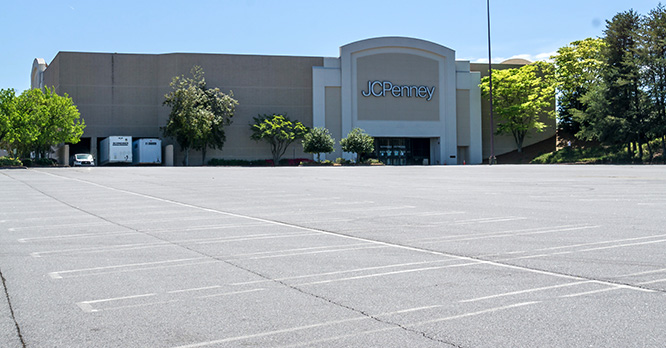网购杂货精打细算 6家最优惠
世界新闻网
4/12/2022
问:如果想网络订购杂货日用品,选择哪些网站最省钱?
答:近二年多新冠疫情让很多人使用杂货配送服务,如今疫情纾缓,是否仍值得采用这类经常外加运费的服务?
美国新闻(U.S.News)撰稿人、个人理财和购物顾问沃洛克(Andrea Woroch)在他的个人网站AndreaWoroch.com表示,在线购物确实可能附加运费等费用,但相对有助于限制冲动购物,因此整体而言,网购较容易守住预算。
沃洛克说,到实体店面购物可能省掉几美元运费,却因为冲动购物反而花费更多;不仅如此,她建议善用CouponFollow.com等网站,多方搜索优惠券,可省运费和一般商品费用。
专家推荐以下六个网购应用程序和服务。
Instacart
这个普及化的杂货应用程序在美、加多数地区都可使用,顾客下单后,由众多杂货店、酒类商店和药店、乃至于好市多(Costco)和BJ’sWholesaleClub等大宗仓库商店送货。该应用程序会员年费99美元或月费9.99美元,运费不一。

会员购物满35美元就免付运费,即使从多家商店订货,也无需额外付费,一次下单可买不同来源的商品。
如果不想加入会员,购物满35美元运费3.99美元,订单不及35美元的运费不一,但至少要10美元才送货;非会员还可能要支付其他费用如服务费、酒水服务费或超重费。
网购便利性没话可说,但Instacart网购价格较贵,对重视时间的人来说值得。
Amazon Fresh
零售网站亚马逊(Amazon)的Amazon Prime会员可订购Amazon Fresh食物,Prime会员年费139美元,运费不一。只要订单满35美元或50美元可免运费,取决于居住地点,若要一小时送货到府,订单满35美元运费4.99美元、订单低于35美元则运费9.99美元,一小时现场取货,订单满35美元免费、低于35美元收费1.99美元。
根据亚马逊网站,Amazon Fresh不送货到宿舍,大学生住宿无法使用这项服务。
沃尔玛送货到家
一旦注册Walmart+会员,月费12.95美元或年费98美元,将可享免费杂货配送服务,但必须订购满35美元,订单不到35美元须付5.99美元运费,使用Express Delivery可在两小时内送货到家,运费10美元。
如果未注册Walmart+会员、而且只想到店取货和使用送货到府服务,各需要支付7.95美元或9.95美元运费,取决于是次日、或者当日送货或取货。
好消息是,购物商品没有加价,网络商店和实体店面标价一致。
Shipt
下载Shipt应用程序或直接造访其网站后,可输入所在地的邮政编码,查看Shipt是否提供服务。会员年费98美元,非会员运费10美元。
若经常使用Shipt,成为会员较划算,购物满35美元就无需付运费,订单不满35美元须付10美元运费,下单和送货到府同一天。
Shipt网购需要有人代您选购,所以商品会加价。借由应用程序可找到优惠,还可搜索Shipt优惠券代码,省更多。
Hungryroot
这是长期食品计划,专门提供健康食品;顾客填问卷,Hungryroot根据结果将适合食品放入购物车,顾客也可自行选择食物。会员周费至少65美元,免运费。
Hungryroot几乎全美都提供服务,阿拉斯加和夏威夷除外。因为以健康食品为导向,有些杂货食品不在服务之列,例如牛奶。
Imperfect Foods
出售美味可口食品,但卖相未必最好看,可能有形状奇特的西葫芦、或者看起来不怎么样的苹果。Imperfect Foods的食物比超市便宜,又可避免食物浪费。免会员费,运费4.99元至8.99元。
一旦成为会员,Imperfect Foods每周选择固定一天送货,Imperfect Foods会预先在您的购物车装满他们认为您可能喜欢的商品,您可在送货前增减、甚至选择停送几个星期。
无论选用哪个网站,有些通用诀窍可省钱。包括避免小额订单、确实了解会员制规定、注意商品是否加价、根据预订送货日谨慎推估订货日期。

What will 80,000 closed stores mean for America’s retailers?
By George Anderson
4/06/2021

If you look up, do you see the retail sky falling, or is a brand new day about to dawn?
Headlines that echo forecasts of thousands of stores closing their doors over the next five years seem alarming on the surface, but perhaps it’s a sign of different things — maybe better or maybe not — to come.
CNBC and Yahoo Finance reported yesterday on a new client note issued by UBS that estimates 80,000 locations will be shuttered by the end of 2026. A worst case scenario, according to UBS analysts Michael Lasser and Jay Sole, would see 150,000 stores closing.
The UBS analysts based their 80,000 estimate on the expectation that 27 percent of all goods purchased at retail will be made online by the end of 2026. That’s up 18 percent of total retail today.
American consumers have been shifting a growing percentage of their purchases to online sites for years and the novel coronavirus pandemic further accelerated the trend.
Retailers such as Best Buy, Target and Walmart that had been increasing their digital investments for years were in the best positions to supply consumers looking for a variety of “essential” goods.
The analysts see mall-based retailers being particularly hard hit in the years to come. Specialty apparel and accessories chains and department stores have seen a growing percentage of sales being made online, while Amazon and others are gaining market share.
Amazon, according to a recent Wells Fargo report, is the number one seller of clothing in the U.S. The retail and technology giant now represents 11 to 12 percent of the total U.S. market. Macy’s, the largest mall-based seller of clothing, produces only about one-seventh of Amazon’s sales.
Americans’ migration online is necessitating changes in real estate strategy. Retailers are reconfiguring existing selling space on store floors to expedite local fulfillment of online orders.
The demand for warehouse space is growing exponentially as retailers build supply chains that address new realities. A report issued by JLL last summer forecast that an additional one billion square feet of industrial real estate space would be needed by 2025 to meet the demand of the online market.
More retail pain ahead: UBS predicts 80,000 stores will close in the U.S. by 2026
Lauren Thomas
4/06/2021
- There were 115,000 shopping centers — a figure that includes strip centers, malls, outlet and other lifestyle centers — across the U.S. at the end of 2020, compared with 112,000 in 2010 and 90,000 in 2000, UBS found.
- That equates to about 59 square feet of shopping center space per household, it said.
- UBS is estimating that 80,000 retail stores will shut across the country by 2026. That assumes e-commerce sales rise to represent 27% of total retail sales, up from 18% today.

Although the pace of store closures has slowed from its 2019 peak, don’t expect the reprieve to last long, according to a new UBS report that suggests America still has far too much retail space per capita.
At the end of last year, there were 115,000 shopping centers — a figure that includes strip centers, malls, outlet and other lifestyle centers — across the U.S., compared with 112,000 in 2010 and 90,000 in 2000, UBS found in an analysis using data from the International Council of Shopping Centers.
That equates to about 59 square feet of shopping center space per U.S. household, which is slightly less than 62 square feet in 2010, UBS said. But it’s still well above the 55 square feet of space per household in 2000, and 49 square feet in 1990, analysts Michael Lasser and Jay Sole explained.
UBS is estimating that about 80,000 retail stores, which is 9% of total stores, will shut across the country by 2026. That assumes e-commerce sales rise to represent 27% of total retail sales by then, up from 18% today.
“An enduring legacy of the pandemic is that online penetration rose sharply,” Lasser said in a note to clients. “We expect that it will continue to increase, which will drive further rationalization of retail stores, especially as some of the unique support measures from the government subside.”
Even though more Americans are increasingly ordering everything from milk and bread to desk chairs to sneakers on the internet, store openings are outpacing closures for the first time in years. Many businesses are seizing the moment to take advantage of cheaper rents and ample vacant space to pick from. The growth largely stems from retailers that sell in beauty, grocery and discount goods, including Ulta, Dollar General, TJX and Lidl, which are anticipating a strong post-pandemic rebound in visits to stores.
U.S. retailers have announced 3,169 store closures and 3,535 store openings so far this year, according to data complied by Coresight Research. The firm tracked 9,832 closures in 2019 — the highest it’s seen since it started following this data. That figure fell to 8,741 in 2020.
UBS said the retail industry has been supported recently by government stimulus and by consumers shifting their dollars to goods from services, with travel and other entertainment events on pause due to the pandemic. But it said those trends are going to be short-lived, leading to a predicted downturn in retail sales, which will result in an uptick in retail closures.
UBS anticipates the most closures will be found among retailers that sell clothing and accessories in the years ahead. The firm is forecasting about 21,000 closures from this sector by 2026, with many of the shuttered stores located in enclosed shopping malls. Office-supplies and sporting-goods businesses are also forecast to be among the hardest hit.
Closures are anticipated to be the most modest in home improvement, grocery and auto parts retailing, as these categories are less susceptible to harm with the rise of e-commerce, UBS said.
— CNBC’s Michael Bloom contributed to this report.
Why U.S. Malls Are Disappearing
Mar 4, 2021
Shopping malls in the U.S. were already in decline before the Covid-19 pandemic as consumers shifted away from traditional brick-and-mortar stores to e-commerce. The outbreak has only exacerbated the challenges at malls as social distancing has placed restrictions on stores, movie theaters and restaurants. So what will become of malls in America after the pandemic ends?
Shopping malls across the U.S. have been reeling as restaurant and retail tenants struggle to keep their doors open.
Data compiled by Coresight Research shows about a quarter of U.S. malls could close over the next three to five years, accelerating a trend that began before the pandemic.
Simon Property Group — the nation’s biggest mall owner — said earlier this month that its fourth-quarter revenue dropped by 24% on a year-over-year basis to $1.1 billion.
However, some analysts think Simon — with its portfolio of A-rated malls and a healthy balance sheet — will benefit as distressed malls operated by its rivals close their doors. The company is also expected to see gains from new additions like hotels and luxury residences.
“Unfortunately there are a lot of centers that don’t fit that high profile and that have lost their competitive edge,” said Piper Sandler analyst Alexander Goldfarb. “The thing about Simon is they’ve been really focused on maintaining it, and that’s both been through a combination of culling the lower productive centers as well as making sure that they keep investing in their top centers.”
Simon Property Group CEO David Simon said the company is also getting a lift from increasing traffic at some of its locations and from tenants paying their rent on time.
Malls are a big tax driver for the communities they serve and employ lots of people locally. Watch the video above to find out more about the struggles U.S. malls face and what could become of them after the pandemic ends.
Source: https://www.youtube.com/watch?v=C_JiP-j2FwM
瑞银预测到2026年美国将有8万家门店关闭
北美e生活
4/06/2021
据 CNBC 4月5日 报道,据瑞银(UBS)的一份新报告显示,尽管门店关闭的速度已从2019年的峰值有所放缓,但不要指望这一缓解期会持续太久。该报告显示,美国的人均零售空间仍然太多。
瑞银在使用国际购物中心理事会的数据进行分析时发现,截至去年年底,全美共有11.5万个购物中心,这个数字包括了购物中心、商场、奥特莱斯和其他生活方式中。相比之下,2010年为11.2万个,2000年为9万个。
分析师迈克尔·拉瑟(Michael Lasser)和杰伊·索尔(Jay Sole)解释说,瑞银估计,到2026年,全国约有8万家零售店将关闭,占零售店总数的9%。这假设电商销售额到时上升到占零售总额的27%,而不是现在的18%。
拉瑟在给客户的一份说明中说,“大流行的一个持久作用是,网络普及率急剧上升。我们预计它将继续增加,这将推动零售店的进一步合理化,特别是在政府的一些独特的支持措施消退后”。
尽管越来越多的美国人在网络上的订购从牛奶和面包,到新的办公桌椅,再到运动鞋等各种商品,但开店速度多年来首次超过关店速度。许多商家都在抓住时机,利用更便宜的租金和充足的空置空间进行选择。这一增长主要来自于销售美容、食品杂货和打折商品的零售商,包括Ulta、Dollar General、TJX和Lidl,它们预计流行病后商店的访问量将强劲反弹。
根据Coresight Research整理的数据,今年以来,美国零售商已宣布关闭3169家门店,开店3535家。该公司追踪到2019年有9832家门店关闭,这是它开始跟踪这一数据以来的最高纪录。这一数字在2020年降至8741家。
瑞银预计,零售业最近受到政府刺激措施的支持,以及消费者将资金从服务转移到商品上,旅游和其他娱乐活动因疫情而暂停。但它表示,这些趋势将是短暂的,导致预计的零售销售下滑,这将导致零售关闭的增加。
瑞银预计,未来几年,倒闭最多的将是销售服装和饰品的零售商。该公司预测,到2026年,这一行业将有约21000家店铺关闭,其中许多关闭的店铺位于封闭式购物中心。
瑞银表示,预计家居装修、食品杂货和汽车零部件零售业的关店数量将最为有限,因为这些品类不太容易受到电商崛起的伤害。
The death of the department store and the American middle class
The collapse of America’s middle class crushed department stores. Amazon and the pandemic are the final blows.
By Jason Del Rey
11/30/2020
In a New Jersey suburb seven miles west of Midtown Manhattan, the American Dream is on shaky ground.
The Dream in question isn’t the mythological notion that upward social mobility is within reach for all hardworking Americans. It’s a $5 billion, 3 million-square-foot shopping and entertainment complex in East Rutherford featuring an indoor ski slope, an ice-skating rink, and a Nickelodeon-branded amusement park. The complex finally opened last fall, but it’s now facing huge new challenges.
The development’s complicated 17-year history, marked by ownership changes, false starts, and broken promises, had already put American Dream in a precarious situation. The Covid-19 pandemic hitting in March made things much worse. Whether the mall makes it in the long term will hinge in part on how it deals with the collapse of three of the marquee department stores that were to anchor the complex and draw foot traffic — Barneys New York, Lord & Taylor, and Century 21 — which all have gone bankrupt and closed, or are planning to close all their stores in the US.
Around 100 storefronts in American Dream opened their doors to customers in October and November, but the complex’s future is not guaranteed. Its owners, Triple Five Group, missed several mortgage payments this summer, and it’s not clear who might fill the enormous holes left by the three fallen department store chains, or which other retail tenants will opt out of their leases now that the development is missing three of its anchors.
While the story of American Dream is unique in many ways, its struggles are emblematic of the bleak future facing many US malls and department stores — whose destinies have long been intertwined. The downfall of these onetime crown jewels of retail will have meaningful impacts on the Americans who work for them and the communities they’ve long called home.
Across the US, department stores are shrinking or shuttering altogether. In 2011, US department stores employed 1.2 million employees across 8,600 stores, according to estimates from the research firm IBISWorld. But in 2020, there are now fewer than 700,000 employees in the sector, working across just over 6,000 locations.
:no_upscale()/cdn.vox-cdn.com/uploads/chorus_asset/file/22130979/GettyImages_1178102058.jpg) The American Dream megamall in East Rutherford, New Jersey, was under development for 17 years before opening in late 2019. Timothy A. Clary/AFP via Getty Images
The American Dream megamall in East Rutherford, New Jersey, was under development for 17 years before opening in late 2019. Timothy A. Clary/AFP via Getty Images
The reasons for the struggles are both shared and unique. Since the Great Recession began in late 2007, the vast majority of income growth in the US has gone to high-income households, squeezing middle-class households and altering where they spend money. As a result, chains that sell brands at sharp discounts like TJ Maxx, Ross, and Dollar General have become more popular, siphoning away shoppers from full-price department stores like Macy’s and J.C. Penney that were designed to cater to a stronger middle class of yesteryear.
Department stores are also facing the reality that they are no longer the main way most shoppers discover or access new brands — which was once perhaps their main appeal as onetime innovators. Consumer brands have increasingly become focused on building connections with customers through their own stores, websites, social media platforms, and other online-only marketplaces.
All the while, department stores’ contraction is upending local labor markets and the communities they called home. And rock bottom is not even here yet. More than half of all mall-based department stores will close by the end of 2021, according to estimates by Green Street Advisors, a commercial property research firm. And that will have a massive impact on malls; as of January, department stores accounted for nearly one out of every three square feet in malls.
“The department store genre has been taking the great American shopping mall down with it, slowly but inevitably,” said Mark Cohen, the director of retail studies at Columbia University who was previously the CEO of multiple department store chains in the US and Canada.

What happens when an entire sector of retail, one that employs more than half a million people, is in free fall — and is slowing or dragging down shopping malls like American Dream with it? And what becomes of the local communities across the country whose social identities and local economies rested on, at least in part, now-fallen department stores and the malls they buttressed? We’re about to find out.
What’s killing the department store
For much of the past century, US department store chains played an important role in many Americans’ lives and an innovative role in the retail sector.
For the American middle class of the 20th century, department stores helped shape what successfully living the American dream looked like. These stores were often an entry point into fashion and home furnishing trends once reserved for only the wealthiest, since they offered large selections of name brands at affordable prices all under one roof — first in big cities, and then following population exoduses to the suburbs. And as the main attractions for malls in the suburban US, they played a foundational role in the idea of shopping as a social activity in the second half of the 20th century.
Department store employees also had it pretty good, for a time. The sector was welcoming to women salespeople, providing a path to certain corporate roles for those who found success, according to the book From Main Street to Mall: The Rise and Fall of the American Department Store. A successful salesperson working in one of these stores, especially before large chains came to dominate the sector, could make a career of their role, providing for their family, no college degree needed. Those days are mostly long gone.
But over the past two decades, a confluence of other factors has placed several giants at death’s door and put even the most innovative in a precarious situation. These factors were both external and internal: Amazon led a boom in online shopping, and many brands that once relied on department stores began selling directly to customers online and in their own stores. Meanwhile, many department store chains made the wrong bets, investing more heavily in store expansion while underinvesting in merchandise differentiation and e-commerce strategies.
But perhaps most critically for the chains targeting the middle class — think Macy’s, J.C. Penney, and Bon-Ton — this category of households has been struggling since the Great Recession began in 2007. According to a 2018 study from the consulting firm Deloitte, “the middle 40 percent” of the country saw its income shrink in the previous decade, while more than $8 out of every $10 in income growth nationwide went to high-income households. As a result, discount chains that sell name brands at a bargain — like TJ Maxx and Ross stores — became much more attractive to middle-class shoppers than department stores selling at full price. The treasure-hunting aspect of stores like TJ Maxx and Home Goods also added to their appeal over many of their department store competitors. Macy’s, the largest traditional department store in the country, said earlier this year that it planned to close 125 of its 800-plus stores — and that was before the pandemic.
“Sears was built for [the] middle-class mall goer,” Web Smith, the founder of the commerce and media newsletter 2PM, wrote in the wake of Sears’s 2018 bankruptcy. “It’s been the thesis of 2PM, Inc. that retailers who’ve built their businesses for this American demo will continue to struggle until the American middle class rebounds.”
But department stores catering to wealthier customers have failed, too. In addition to Sears and J.C. Penney, higher-end stores Barneys New York, Lord & Taylor, and Neiman Marcus have all filed for bankruptcy in the past two years. Even Nordstrom, viewed by industry insiders as the most progressive traditional department store chain, is facing significant headwinds. While overall US e-commerce sales increased 45 percent year over year from April to June as pandemic shutdowns pushed more shoppers online, Nordstrom registered just 20 percent growth in online sales.
As more Americans came online and as social media platforms rose in popularity, brands started establishing direct relationships online and through their own stores, which chipped away at their reliance on department stores for finding customers. For a while, department stores still could provide a way to reach mostly older consumers who preferred in-person shopping or others who didn’t have internet access, but the chains became more complementary for popular brands rather than remaining a crucial sales channel.
More mid-priced brands such as Levi’s and Adidas started selling on Amazon and other online marketplaces as department stores targeting the middle class began to struggle, meaning chains like Macy’s now had serious online competition, too. And since Amazon and other top online retailers are in many cases more convenient than visiting a large store where salespeople are trained and paid less than they once were, department store advantages further diminished.
:no_upscale()/cdn.vox-cdn.com/uploads/chorus_asset/file/22130344/GettyImages_900421204.jpg) Two of the three anchors at the Shenango Valley Mall in Hermitage, Pennsylvania, have closed in recent years. Dustin Franz for The Washington Post via Getty Images
Two of the three anchors at the Shenango Valley Mall in Hermitage, Pennsylvania, have closed in recent years. Dustin Franz for The Washington Post via Getty Images
Finally, some private equity companies — investment firms that buy up struggling companies in part by saddling them with debt — have taken aim at the sector, and the debt associated with their takeovers has hastened the demise of some department store chains like Neiman Marcus. The Dallas-based luxury chain filed for bankruptcy earlier this year under crushing debt from its PE owner.
The chain was also late to e-commerce — when it finally started getting aggressivearound 2014, introducing free shipping and returns to better compete with Nordstrom, it didn’t work and instead crimped its profits. The company’s bottom line was also hurt by some of the biggest brands it sells moving from a wholesale model to a more flexible and lower-risk model that was less profitable for Neiman Marcus. While a private equity owner didn’t force these moves, the fallout from these crises coupled with a heavy debt burden was a recipe for disaster.

How the decline of department stores is reshaping communities
While the pandemic has accelerated contraction of the department store industry, the sector has been in a slow descent for decades. And the communities they call home, which experienced the upside of their presence during the golden years, are now faced with a series of cascading challenges.
“First they become an eyesore; it’s aesthetically damaging,” said Vicki Howard, the author of From Main Street to Mall. “Second, there’s the jobs. … Third, it impacts the consumers themselves that have turned to that area for leisure activities, for places to go in the winter, to go with their kids.”
“It’s quite a big economic and social and cultural phenomenon to have these department stores closing — and malls also,” she added. “They occupy such a physical place as well as a social space.”
The decline of department stores and the malls they supported has required local governments to get creative. In Bartlesville, Oklahoma, a city of 36,000 near the border of Kansas, local officials have embraced discount chains as the local Washington Park Mall has struggled. The city provided $1.5 million in incentives in 2016 to develop an outdoor shopping center with popular discount retailers TJ Maxx and Ross to help offset the longtime troubles of the mall, once anchored by the department stores Sears, J.C. Penney, and Dillard’s. (Sears and J.C. Penney both closed their stores there in recent years, and Dillard’s recently turned its mall location into a clearance store.)
“We’ve been exceedingly fortunate to have replaced the mall’s legacy brands with up-and-coming brands better aligned with today’s consumer preferences,” David Wood, Bartlesville’s economic development chief, told Recode in an email.
The city also provided a $200,000 incentive to divide an old Kmart into five smaller retail establishments, including outlet stores Ollie’s and Burkes Outlet, as well as a Dollar Tree store. The new retail additions, Wood added, “have largely offset the employment loss — with rising sales tax collections, too.” Taxable physical retail sales dropped in 2015 and 2016 in Bartlesville but grew modestly in 2018 and 2019. Of course, department store jobs are different from discount chain jobs, which have lower average hourly pay and rarely offer sales commissions.
In Madison, Wisconsin, local city-planning officials are looking ahead to a possible future where their city won’t have malls anchored by department stores. They have been discussing potential redevelopment plans for the areas around the community’s struggling East Towne Mall and West Towne Mall since 2018, and the discussions took on added significance when the malls’ owner filed for bankruptcy in early November.
Several of the malls’ anchor tenants have closed up shop in the past few years, including the department store chains Boston Store and Sears. While the Madison economy is diverse outside of retail, with a large research university and state government offices calling the city home, city planners believe it is critical to start discussing potential redevelopment plans, whether or not the mall’s owner ends up selling or gets on board with redevelopment, because by the time large commercial properties are in true distress, the ripple effects can be dangerous.
“Longer-term vacancies can sometimes snowball and have the effect of spreading and negatively impacting surrounding areas,” said Ben Zeller, a city planner for Madison.
:no_upscale()/cdn.vox-cdn.com/uploads/chorus_asset/file/22130781/GettyImages_827823162.jpg) Display tables and a mannequin sit for sale on the empty floor of a former J.C. Penney store at the Columbia Mall in Bloomsburg, Pennsylvania. Don Emmert/AFP via Getty Images
Display tables and a mannequin sit for sale on the empty floor of a former J.C. Penney store at the Columbia Mall in Bloomsburg, Pennsylvania. Don Emmert/AFP via Getty Images
Madison officials have been studying other mall redevelopment plans around the country for ideas about what to do. If redevelopment of these Madison malls does end up happening and looks anything like projects in other communities that city planners are studying, the retail presence would likely be downsized and supplemented by new residential buildings and non-retail employers. Zeller himself lives in an apartment building built on a former mall parking lot in another part of Madison.
At a high level, Zeller told Recode that such redevelopment plans are complex, which means they take time: 15 to 20 years or longer to complete. One challenge involves the fragmented ownership structure of large mall properties, where the main mall may be owned by one business and the department store anchors and restaurants could be owned by separate entities. Another challenge involves restructuring the public street network around malls.
“It’s very difficult to have a future neighborhood created when there are blocks [in existing mall developments] that are 100 to 200 acres as opposed to a normal city block,” he added. Residential neighborhoods typically need shorter street connections to make public transportation and walking viable.
Zeller added that the city wants to make sure that, no matter who buys in, “we ultimately end up with a connected public street network, adequate parkland to serve new residential uses, integrated transit, an improved bike network, and other components of complete neighborhoods.”
In short, communities can rebound from department store chain failures — and the ripple effect on malls — if they have the time and resources to plan two decades into the future like Madison is starting to. But not every American community does.
What it means for the people who depend on retail jobs
While some of the evolution that the department store sector has gone through marked natural generational shifts in consumer behavior, the industry’s failures have had a significant impact for those who work in retail, extinguishing the idea of retail sales positions as careers — whichin the 20th century was an advantage for department stores.
“It’s a negative cycle. If you have less career-oriented employees and higher turnover, you invest less in those employees,” said Jason Goldberg, the chief commerce strategy officer at the global advertising holding company Publicis. “It creates this vicious cycle and then you can’t recruit good employees. They were turned from advisers and very relationship-based salespeople into cashiers.”
With few exceptions, the idea of a department store sales job being a career hasn’t been a reality for decades. In the mid-1900s, they could be steady, family-supporting jobs with fixed schedules. But in the decades following the birth of big-box retailers Walmart, Kmart, and Target — all in 1962 — retail wages began dropping as traditional chains chased the lower-paying labor models of the new discount retailers.
“I would have to guess that by 1980 it was not likely that a single-wage earner could support a family while working on the selling floor of a retail store,” said Cohen, the Columbia professor and former department store executive.
Yes, there are still top salespeople at chains like Nordstrom or Neiman Marcus who might pull in six figures, but they are the few exceptions to the rule.
So where are department store employees going as their employers cut jobs, close stores, or go bankrupt?In the five-year period from 2015 to 2019, more started working in discount chains. The category of the retail industry that includes dollar stores like Dollar General jumped into the top five categories of employment that attracted workers who had recently left or were laid off from a department store job. (This job transition data was based on a Brookings Institution analysis of current population survey public-use microdata provided to Recode by Chad Shearer, a former senior research associate at the think tank who is now an economic development consultant.)
That may not be a great thing, as least as it relates to employee earnings. While Dollar General’s stock price has nearly tripled over the past five years, its front-line employees don’t see much of that enrichment. Average hourly base pay at Dollar General is $9, according to the job review site Glassdoor, compared to $11 at Macy’s.
The rise of e-commerce can be seen in this job movement data, too.During the same five-year period, if you combine the “electronic shopping” and “warehousing” job sectors (which both include e-commerce companies) into one category of employment, the combined sector moves into the top 10 for industries where employees who had recently left department store roles went to work next. It’s possible e-commerce employers should rank even higher in reality, since many e-commerce warehouse employees are technically hired by third-party temporary employment firms.
:no_upscale()/cdn.vox-cdn.com/uploads/chorus_asset/file/22130805/GettyImages_1136921937.jpg)
There are trade-offs to this shift. On the one hand, Amazon warehouse employees in the US make a base wage of $15 an hour, which is a higher base pay than most entry-level department store jobs. But the work is often much more physical in nature than a retail job,requiring workers to pick or stow hundreds of items per hour at a rapid pace and to be able to lift up to 50 pounds of goods. The reality is that when it comes to finding a job in 2020, Amazon and Walmart — already the two biggest private sector employers in the US — are the retailers offering work. While so many industries have contracted, they’ve added hundreds of thousands of new job openings this year alone. And as department stores continue to cut jobs, the largest players in the new retail economy capture more power in the labor market.
How to rebuild from department stores’ ruins
There is no silver bullet for US department stores to immediately start thriving again, so the best many can do is simply try to adapt and survive. For chains that still have a nationwide presence — like Macy’s or Nordstrom — that means fewer large, full-price stores and more investment in e-commerce sales, potentially supplemented by smaller pickup points for online orders to offset expensive shipping costs. Macy’s executives have also said the company plans to test smaller stores that aren’t attached to malls in an effort to unhitch their destiny from struggling regional malls built for a weakening American middle class.
As these chains fight their uphill battles, they are being replaced by a bevy of options that can provide better prices, selection, or convenience to shoppers of all wealth levels. The best discount chains, for example, are still thriving a decade after the Great Recession ended. Even without a strong e-commerce presence, the parent company of TJ Maxx, Marshalls, and Home Goods is moving steadily through the pandemic, with a stock price equal to what it was before Covid-19 hit the US in March. And Dollar General’s stock price hit an all-time high in October; the company is now worth nearly $53 billion.
Brands that sell apparel and cosmetics — key product categories for many department store chains — continue to sell more goods directly to shoppers through their own stores and websites rather than through department store chains. This direct connection gives brands, whether they’re established or new startups, more control over how their goods are displayed, more information about who their customers are, and often better profit margins. Nike, for example, stopped selling through department stores Belk and Dillard’s earlier this year and is no longer available at the online retailer Zappos. Under Armour announced it would cut its wholesale partners in North America by 2,000 to 3,000 stores. New online retailers that attract digital-savvy consumers and, in turn, more brands — like Stitch Fix, Rent the Runway, The RealReal, and ThredUp — were also stealing market share from department stores pre-pandemic.
But Amazon continues to be the titan of the modern retail world. It’s at least seven times bigger than No. 2 Walmart in e-commerce, and it’s continuing to invest in beefing up its physical store presence as well. While the online giant’s direct impact on department stores was minimal for much of its history, things have changed in recent years. Amazon is still not a high-end fashion destination, but it is absolutely a place where a majority of Americans are willing to buy footwear, casual clothing, or basics like underwear and socks. In April, the retail research firm Coresight said that more than 70 percent of apparel shoppers bought clothing or footwear on Amazon in the prior 12 months — an increase of 10 percentage points from 2019 and 25 percentage points from 2018. At the weakest moment for department stores, Amazon is becoming a more powerful direct competitor.
Taken together, the future for department stores is bleak, and for many of the malls they anchor. Yes, the US has too many retail stores — 40 percent more retail square feet per person than No. 2 Canada — and too many subpar malls, considering current shopping trends. Yes, the retailers courting business away from department stores are providing superior products, prices, or experiences that are resonating better with shoppers. Yes, it is normal in capitalism for industry categories to fall while others rise.
But the communities across the country that depended on these stores and malls as job creators will have to get creative to rebuild around their ruins. And the Americans who once saw a department store sales job as a potential career, or at least an entry path to a better-paying retail corporate job, now face a new reality: Many of the biggest retailers hiring today — discount chains and e-commerce giants — are offering less pay, or perhaps better pay but less personable and more grueling work.
Even if you could snap your fingers and return this retail sector to glory, it wouldn’t solve the key societal and macroeconomic problems connected to its decline. While the median US household brought in 48 percent more income in 2018 than in 1970, the vast majority of those gains happened prior to 2000. Along the way, the middle class’s income share — which many of the biggest department store chains catered to — has shrunk by 19 percentage points as the rich keep getting richer. In turn, most shoppers value discounts above all else; who can blame them? And for those who can afford it, the convenience of Amazon Prime delivery and its endless virtual shelves of merchandise is very difficult to beat. If the American dream of department stores wasn’t fully extinguished before 2020, the year of the pandemic will make sure it is.
Source: https://www.vox.com/recode/21717536/department-store-middle-class-amazon-online-shopping-covid-19









